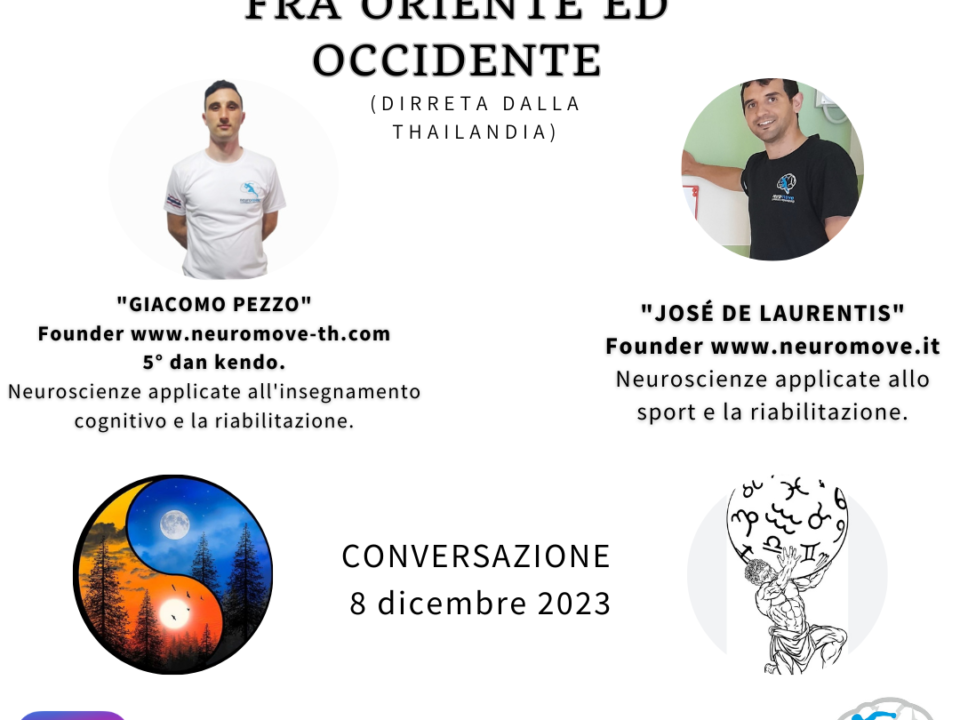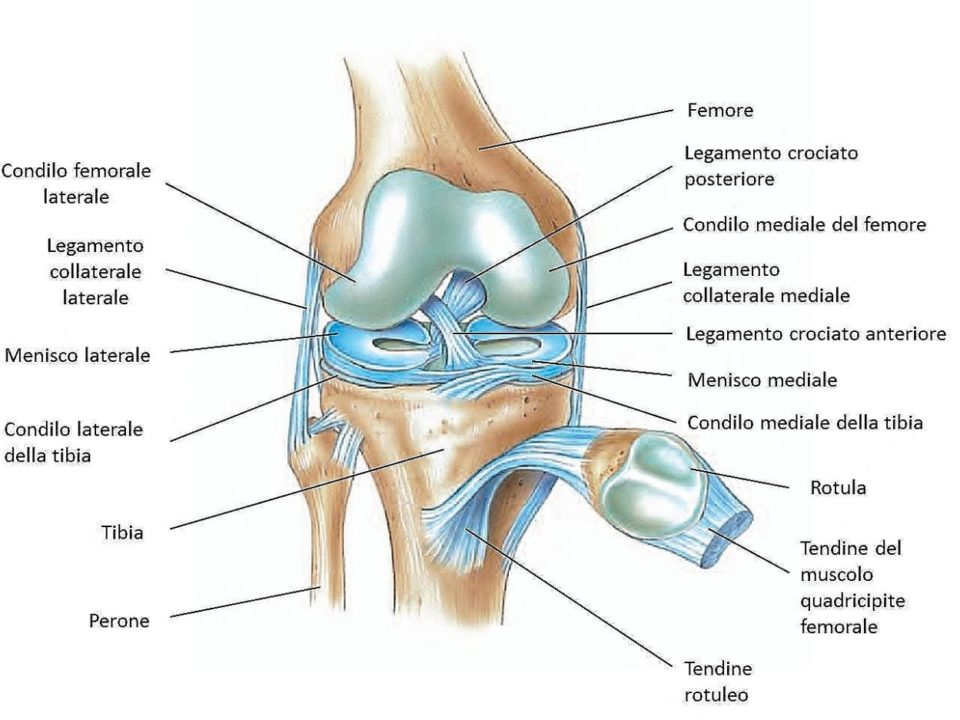- Motion Realizing
- info@neuromove.it
TECHNOLOGY, multitasking AND SPORT

Keywords: Multitasking, evolution, neurobiology, adaptation, Keywords: Multitasking, evolution, neurobiology, adaptation,
It's common knowledge that humans have not evolved with the ability to play sports; does not exist, therefore, a genetic prepared for a specific sports activity, as the same sport has been developed as a function of human movement, and not vice versa.
Consider a usual situation: John is an amateur soccer player of 25 years born in 1993, talented and promising, which is recriminations that her talents are due to genetics of his family for several generations of football players now.
Now, considering that the generations go 25 for 25 years, and played football with the Regulation to now known, was established in 1866 (“The Football Association”), It is difficult to think that a hypothetical “pluri-grandfathers” John was born in 1843 may have contributed to send the genes as a player, as football, at that time, had not yet nato.In substance NOT Giovanni was born to play football, as none of her relatives, but neither Luca He was born to play tennis and Marco for basketball; it is precisely the purpose of the sports culture naturalize these now lies founded, which turn out to be harmful since they are absurd pressures on young athletes.
E’ true that there are theories that say that the ball game already existed in centuries B.C., even at the end of the Middle Ages Shakespeare; He called the first players as “those low soccer players”However the whole cultural history, that is, by B.C. centuries, through the Middle Ages up to the postmodernism of John, it's just a blink of an eye compared to the millions of years of evolution.
Again, no one was born with sporting genes, in any case there are genes that help develop movements whose major contributions, following the evolutionary logic, is to contribute to the natural survival of the species concerned instinctive fetal movements, the rudimentary spinal reflexes, as well as that all use of voluntary movement. It is these movements that gave birth to the stressful two-handed backhand of modern tennis for example, or that form the basis of training systems such as the “ancestral yoga”The original military training, and various sports techniques.
Human culture has created this phenomenon, just think of the spectacle of gladiators in ancient Rome, where at that time, as now, the human being has had to adapt and develop neurological structures, which at the same time have guided the evolution of the brain 'homosapiens.
Multiple genetic and political circumstances of the phenomenon “sport”Despite all their actions, despite all the “circus” and the business they have created, the sport is currently one of the pillars in the development of neurocognitive humanity.
The multitasking evolution
The evolution, rather, it has a purpose. The bodies have not evolved for a purpose that is not the only help the body to survive. As a result, how to use these are constantly changing. There is not a single organ of the human body that makes only the operation that was his prototype when it appeared hundreds of millions of years ago.
The organs evolve to perform a particular function, but once formed may also be adapted for other uses, discarding or less (depending on the organism in question) their primary functions.
The mouth for example, because it has appeared the primitive multicellular organisms needed a way to introduce nutrients into their body. We use human mouth again for this purpose, but also use it for kissing, talking or singing.
Similarly, the wings of the birds are not suddenly emerged in all their splendor aerodynamic. They were developed by bodies that had other functionality. According to one theory, the insect wings have evolved millions of years ago by protrusions of insects that could not fly. The insects with these protrusions possessed a wider dimension, and this allowed them to expose themselves to more sunlight and therefore remain warmer.
In a slow evolutionary process, these protrusions have increased in size. The same structure that was excellent for maximum absorption of sunlight (large surface, low weight) also provided the insects with some support when jumping, which they would then use to fly. The same kind of multitasking is applicable to our organs and sexual behavior. Sex evolved first for procreation, then for ritual courtship as a way to assess the suitability of a potential partner. However, many animals today use it for a multitude of social purposes that have little to do with making small copies of themselves. Chimpanzees, for example, use sex to strengthen political alliances, establish intimacy and avoid tension between them.
Dynamic industrial post
Thanks to consumer dynamics, post-industrial life, the technological revolution with airplanes, mobile phones, tablets, machines with artificial intelligence and the new communications on the Internet and social networks, infinite types of data can be analyzed; for example the promotion of a new mobile phone, or an osteopathy course, or the money that would be lost for the third world war, are processes that the human organism, guided by the central nervous system, must constantly maximize in order to remain connected to this global reality by creating extraordinary enterprises that develop its data collection capabilities.
Multitasking in everyday life.
When we drive a car while chatting with a passenger, when we read and at the same time listen to music or imagine, when talking on the phone and we mix the sauce, when we listen to a news broadcast and simultaneously curiosiamo in the facebook board, etc.…We are, in fact, developing the largest known to date sporting ability: multitasking.
In fact, at the highest levels of modern sport, we seek maximum performance at neurocognitive level, neuropsicomotorio, and developing the creative stimulus that has great need of the twenty-first century human brain.
In fact, the concept of sport is a multitasking, even in those situations “open”: It leads, checking and kicking the ball with the foot, you sprint, you make the throw with your hands, you keep in mind the rules of football, it puts in place a tactic, while at the same time if you read the play second by second and listen to the instructions of the coach and teammates.
Three questions arise from this. The first two may perhaps remain unanswered, and while the third is developed.
Attentions are simultaneous, or is a fast sequential process but one that carries the brain for different neuromotor tasks?
So ... it is just learning and automation of a movement that gives us the opportunity to shift the focus to other motor tasks in the act of multitasking?
So what is multitasking?
It is the simultaneous ability of the brain to adapt and interact with their surroundings, making, two, three, or more neuromotor activities (with various types of neuromuscular activation), with both of the half-bodies, with the different arts, and with great concentration in many cases .This combination of activities, develops parallel activation and auto-influencing between the different brain circuits of sensory areas, and functional regions of the brain.
When we refer to self influence, we emphasize the difference in terms of neurological circuits / engines, between the old dispositional system that we still have (which we share with other mammals, and that is the basis of the new ” The brain maps “).
The old system is simple, cyclical and closed, while the new one can be more complex, also has feedback and feedforward, can also be modified with endless afferents from other regions and lower orders, such as the periaqueductal gray, the solitary tract, and parabrachial nucleus, (sets of structures that are involved in the formation of emotions and feelings) or those of higher order as the somatosensory cortices, visual and auditory.
In conclusion, a group of scientists at Stanford University, has put together a search with twenty students. The researchers divided the group into two: “multitasking” and “traditionalists” (those used to concentrating on one activity at a time), and then subjected them to a series of cognitive tests. The conclusion is that the brain of multitaskers is less efficient because it is badly trained, as it is forced to work in a non-functional way. Being exposed to a continuous flow of information, in fact, damages the memorization process, prevents you from concentrating and distinguishing the relevant stimuli from the distracting ones.
Obviously, this search can not be used as an absolute truth in the world in general, nor in the sport in particular, on the grounds that evolution itself, as well as the modern sport, has features and multitasking moments, like other moments maximum attention to a particular movement, activity or function.
In any case research at Stanford helps us to reflect on the quantity, quality or disability of multitasking within a training program, whose implementation is determined by the characteristics of sport, and the neuropsychological characteristics of each of our athletes or students.
Sources:
Yuval Harari, “Sapiens”
Antonio Damasio, “The self that comes to mind”
Niles Eldredge, “The origin of the Tree of Life”
Angel Barco, “Neuronal Universe”
Peter Trabucchi “Techniques of inner strength”
By Jose De Laurentis.





